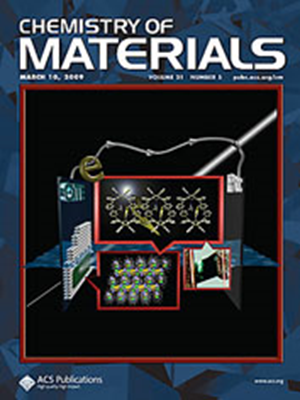Diamond: Recent Progress in Synthesis and Its Potential in Electronics
IF 7
2区 材料科学
Q2 CHEMISTRY, PHYSICAL
引用次数: 0
Abstract
Diamond, with its extraordinary physical and electrical properties, has emerged as a transformative material for next-generation electronics. Its ultrawide bandgap, superior thermal conductivity, high carrier mobility, and excellent mechanical characteristics uniquely position it to address the limitations of traditional semiconductor materials. However, realizing the full potential of diamond in electronic applications requires overcoming significant challenges in its synthesis scalability, defect and dislocation control, and advanced device fabrication. In this Perspective, we discuss strategies and recent advancements in the synthesis of single-crystalline diamond in wafer scales as well as the reduction of defects and dislocations. The development of new diamond morphologies is also reviewed, underscoring their potential to modify properties and broaden application domains. Furthermore, we highlight the progress in engineering diamond-based electronic devices, particularly, field-effect transistors (FETs). Innovations in surface conductivity optimization and the realization of stable, normally off-device operation have enhanced the performance and reliability of diamond devices. Key areas for future research are proposed throughout, offering insights into the opportunities and challenges that remain in diamond synthesis and harnessing diamond’s full potential for next-generation electronic applications.

金刚石:合成的最新进展及其在电子学上的潜力
金刚石具有非凡的物理和电学特性,已成为下一代电子产品的变革性材料。它的超宽带隙、优越的导热性、高载流子迁移率和优异的机械特性使其独特地解决了传统半导体材料的局限性。然而,实现金刚石在电子应用中的全部潜力需要克服其合成可扩展性,缺陷和位错控制以及先进器件制造方面的重大挑战。在这一观点中,我们讨论了在晶圆尺度上合成单晶金刚石的策略和最新进展,以及减少缺陷和位错。综述了金刚石新形貌的发展,强调了它们在改变性质和拓宽应用领域方面的潜力。此外,我们强调了工程金刚石基电子器件的进展,特别是场效应晶体管(fet)。表面电导率优化方面的创新,以及稳定、正常的非器件运行的实现,提高了金刚石器件的性能和可靠性。提出了未来研究的关键领域,提供了对金刚石合成中的机遇和挑战的见解,并充分利用了金刚石在下一代电子应用中的全部潜力。
本文章由计算机程序翻译,如有差异,请以英文原文为准。
求助全文
约1分钟内获得全文
求助全文
来源期刊

Chemistry of Materials
工程技术-材料科学:综合
CiteScore
14.10
自引率
5.80%
发文量
929
审稿时长
1.5 months
期刊介绍:
The journal Chemistry of Materials focuses on publishing original research at the intersection of materials science and chemistry. The studies published in the journal involve chemistry as a prominent component and explore topics such as the design, synthesis, characterization, processing, understanding, and application of functional or potentially functional materials. The journal covers various areas of interest, including inorganic and organic solid-state chemistry, nanomaterials, biomaterials, thin films and polymers, and composite/hybrid materials. The journal particularly seeks papers that highlight the creation or development of innovative materials with novel optical, electrical, magnetic, catalytic, or mechanical properties. It is essential that manuscripts on these topics have a primary focus on the chemistry of materials and represent a significant advancement compared to prior research. Before external reviews are sought, submitted manuscripts undergo a review process by a minimum of two editors to ensure their appropriateness for the journal and the presence of sufficient evidence of a significant advance that will be of broad interest to the materials chemistry community.
 求助内容:
求助内容: 应助结果提醒方式:
应助结果提醒方式:


